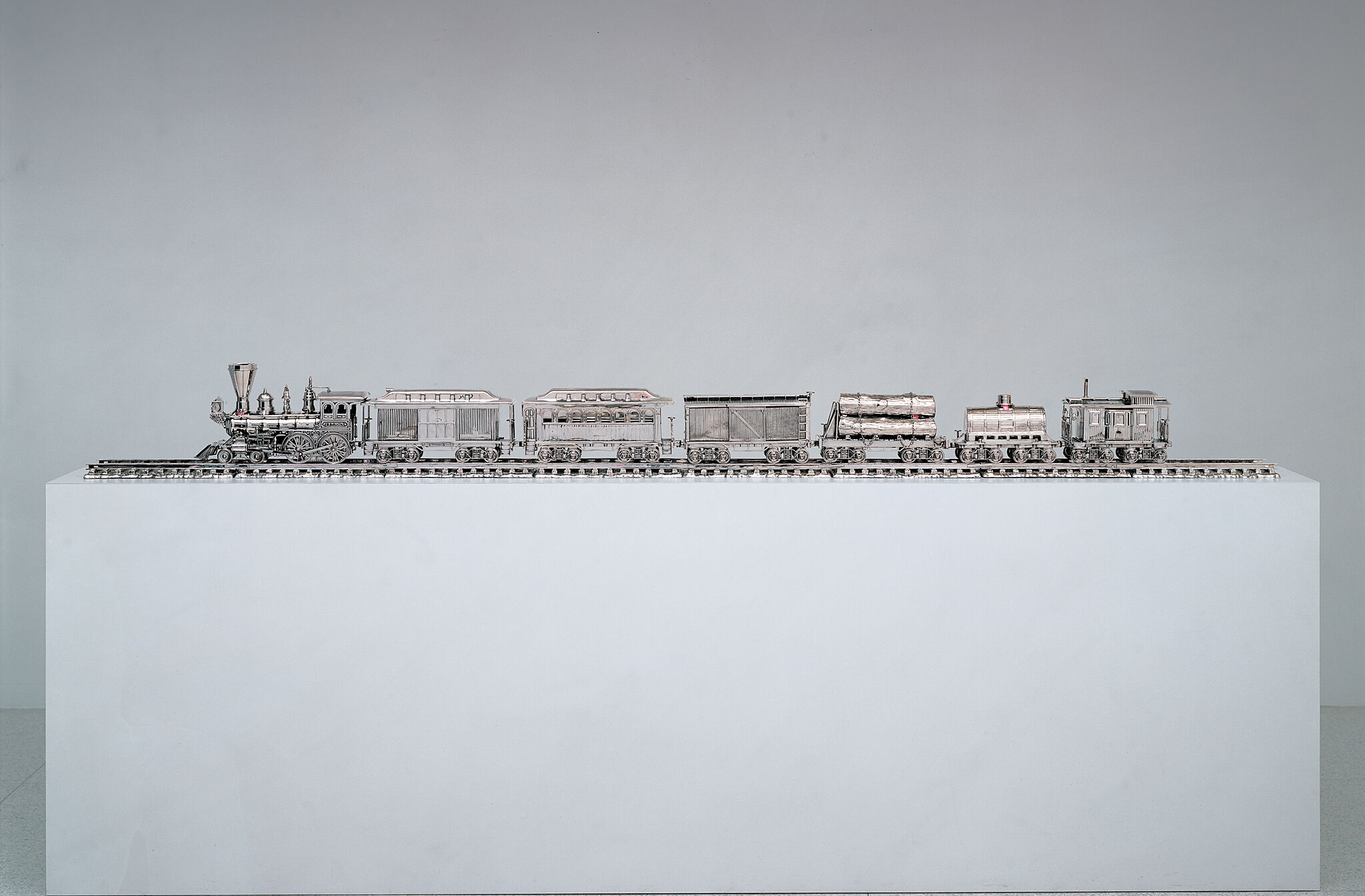Jeff Koons: A Retrospective | Art & Artists
June 27–Oct 19, 2014
Jeff Koons: A Retrospective | Art & Artists
Luxury and Degradation
4
The works in Luxury and Degradation address the marketing and consumption of alcohol to raise questions about the relationships among advertising, class, vice, and art. Canvases printed with oil-based inks make artworks out of liquor ads, while Koons further seduces viewers with shiny stainless-steel casts of vessels and accessories for serving alcohol. “I thought stainless steel would be a wonderful material,” he remarked. “I could polish it, and I could create a fake luxury. I never wanted real luxury, instead, I wanted proletarian luxury, something visually intoxicating, disorienting.” If in his previous series Koons largely employed objects that had practical functions, here he points to the “degradation” of being in thrall to things primarily intended to decorate our lives and confer social status—or at least nurture fantasies of it.
Jim Beam—J. B. Turner Train, 1986
Koons cast this train of stainless steel from a collectible made of porcelain and plastic and filled with Jim Beam bourbon. For Koons, the train represented a type of artisanal, art-like object that middle-class consumers aspired to own. Stainless steel, imparts the readymade with a monochromatic elegance reminiscent of modernist sculpture and captures its viewers and surroundings. It was also chosen because it happens to be the best material for storing and preserving liquor. Indeed, after it was cast, Koons brought his train to the Jim Beam distillery in Kentucky, where he had the cars filled with bourbon and sealed with paper tax stamps to complete the work: “You can drink it and enjoy the bourbon, but you have killed the work of art because you’ve destroyed the soul of the piece when you break the tax-stamp seal.” With the addition of the seals, Koons imbricated this work directly within the corporate, governmental, and market systems it simultaneously celebrated and skewered.

